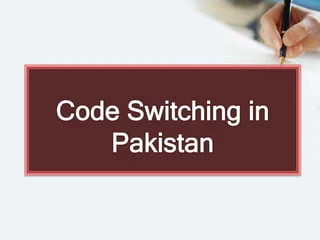- Advertisement -
By Zia Ur Rahman
ISLAMABAD, Jan 05 (APP):The widespread practice of code mixing and code switching has become a prominent feature of communication in Pakistan, particularly among the younger generation.
The foundations of bilingualism in the Pakistani context can be traced back to the nineteenth century when the region was under British colonial rule, which introduced both power and language into the subcontinent.
A significant factor contributing to the advancement of bilingualism is colonization (Kachru, 1986). Braj B. Kachru, a linguist, pioneered the concept of World Englishes.
Code mixing is a ubiquitous feature of everyday conversations in Pakistan. For instance, a person might say, “Main kal office ja raha tha, aur mujhe ek important meeting thi” (I was going to the office yesterday, and I had an important meeting). In this sentence, the speaker has amalgamated Urdu and English words to convey his message effectively.
This phenomenon is a testament to the fact that language use is often characterized by a high degree of fluidity and adaptability.
Code switching is also a common feature of Pakistani media, particularly in TV shows and interviews.
For example, in a recent interview with a Pakistani celebrity, the host asked, “Aapko kya lagta hai ke aapka latest project kaisa perform karega?” (What do you think about your latest project’s performance?). The celebrity responded by switching between Urdu and English, saying, “I think it will do well, kyunki humne ismein kafi mehnat ki hai” (I think it will do well, because we’ve worked hard on it). This phenomenon is a reflection of the fact that language use is often shaped by social and cultural contexts.
Many Pakistani celebrities are known to code switch in their interviews and public appearances. For example, in a recent interview, actress Mahira Khan said, “I’m really excited about my upcoming project, kyunki ye ek bahut hi interesting story hai” (I’m really excited about my upcoming project, because it’s a very interesting story). This phenomenon is a testament to the fact that code switching is a common feature of language use in Pakistan.
Code mixing is also a common feature of language use on social media platforms in Pakistan. Many users mix Urdu and English words in their posts and comments. For example, a user might post, “Just had an amazing breakfast at this new café in Lahore! Koi aur bhi try karega?” (Just had an amazing breakfast at this new café in Lahore! Will anyone else try it?). This phenomenon is a reflection of the fact that language use is often shaped by technological advancements.
According to a study by Rahman (2009), a Ph.D. scholar, code mixing and code switching can have both positive and negative impacts on language proficiency.
Maria Khan, a research student at Fazaia Bilquis College of Education for Women at PAF Base Nur Khan with a keen interest in sociolinguistics, has extensively analyzed the phenomenon of code mixing and code switching.
Maria highlights that it is a common feature of language use in educational institutions across Pakistan. Many students frequently mix Urdu and English in their academic writing and presentations. For example, a student might write, “The main theme of this novel is the struggle for independence, jo ke humari history ka ek important hissa hai” (The main theme of this novel is the struggle for independence, which is an important part of our history).
This phenomenon illustrates how language use is often shaped by educational contexts.
As Maria further notes, the trend of code mixing and code switching has significant implications for language teaching and learning in Pakistan. According to a study by M. Khan (2017), a PhD. scholar, this phenomenon impacts both the effectiveness of language instruction and the development of bilingual proficiency.
In conclusion, Maria emphasizes that code mixing and code switching are pervasive phenomena in Pakistan, especially among the younger generation.
Prof. Dr. Junaid Ghauri, a university professor at Allama Iqbal Open University and International Islamic University, highlighted the growing prevalence of code mixing and code switching in Pakistan.
Speaking to the APP, Dr. Ghauri emphasized that the phenomenon, where individuals blend languages in communication, has become a natural outcome of globalization.
He noted that Pakistanis often use more than two languages in their daily conversations, both intentionally and unintentionally.
Prof. Ghauri pointed out that Urdu, as a language, has absorbed words from Persian, Arabic, Hindi, and Turkish, making it inherently multilingual.
Ghauri also mentioned that bilingualism is particularly prominent in professional settings, where media personalities and university professors commonly switch between languages like English, Urdu, and Arabic, especially when communicating with diverse audiences.
He concluded by stating that code mixing and switching are not only a result of globalization but also a necessity in certain fields, such as education, where students from remote areas often request explanations in both English and Urdu.

